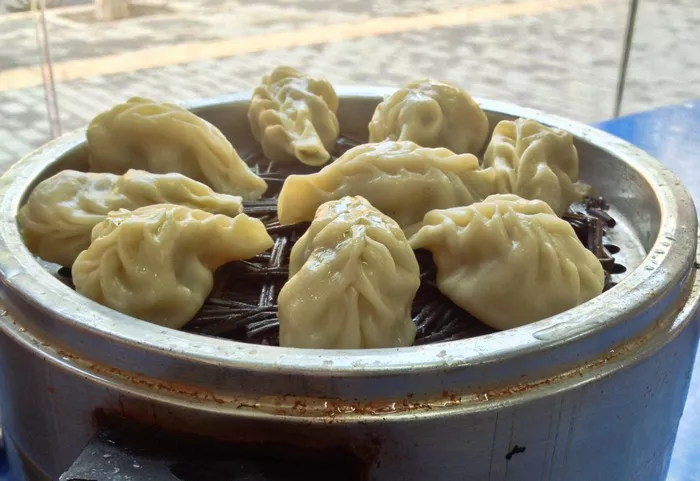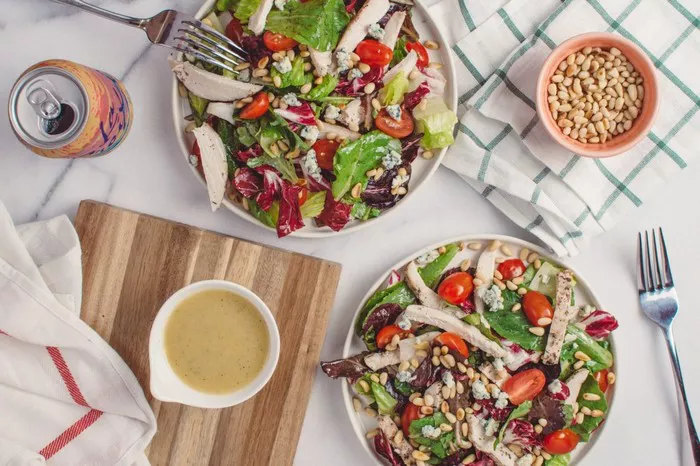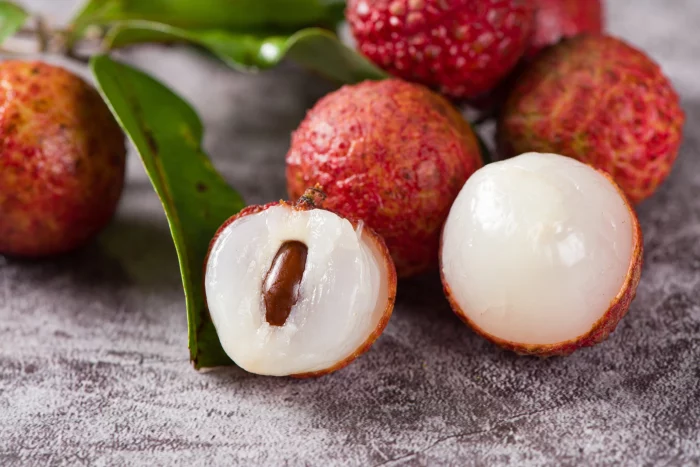Chinese dumplings, also known as jiaozi, are a beloved staple in Chinese cuisine. These delightful parcels of dough filled with a savory mixture of meat, vegetables, and seasonings are not only delicious but also fun to make. While dumplings are readily available at restaurants and street food stalls, there’s something special about crafting them from scratch in your own kitchen. In this step-by-step guide, we will walk you through the process of making traditional Chinese dumplings, so you can enjoy the satisfaction of creating these flavorful treats in the comfort of your home.
Gathering the Ingredients and Equipment
Before diving into the dumpling-making process, it’s important to gather all the necessary ingredients and equipment. Here’s what you’ll need:
Ingredients:
- Dumpling wrappers (can be store-bought or homemade)
- Filling ingredients (common options include ground pork, cabbage, scallions, garlic, ginger, and soy sauce)
- Seasonings (such as salt, pepper, sesame oil, and soy sauce)
- Dipping sauce ingredients (like soy sauce, vinegar, sesame oil, and chili oil)
Equipment:
- Mixing bowl
- Chopping board
- Sharp knife
- Rolling pin (if making homemade wrappers)
- Dumpling press or your hands for folding the dumplings
- Steamer or large pot with a steamer insert
With these essentials in place, you’re ready to embark on your dumpling-making adventure!
Preparing the Dumpling Filling
Prepare the Filling Ingredients: Finely chop the cabbage, scallions, garlic, and ginger. In a mixing bowl, combine the ground pork with the chopped vegetables. Add the seasonings, such as salt, pepper, sesame oil, and soy sauce. Mix everything together until well combined. Feel free to adjust the seasonings to your taste preferences.
Mixing and Incorporating: To ensure a flavorful and well-mixed filling, use your hands or a spoon to mix the ingredients thoroughly. This step helps distribute the seasonings evenly and ensures a cohesive filling mixture.
Test Cook a Small Portion: To check the seasoning and adjust if needed, take a small portion of the filling mixture and cook it in a pan. Taste it and make any necessary adjustments to the seasonings before proceeding.
Wrapping the Dumplings
Now that your filling is ready, it’s time to wrap the dumplings. You can use either store-bought dumpling wrappers or make your own from scratch.
Using Store-Bought Wrappers:
Moisten the Edges: Take a dumpling wrapper and place it on your palm or a clean surface. Dip your finger in water and moisten the outer edges of the wrapper. This helps seal the dumpling.
Add the Filling: Place a small spoonful of the filling mixture (about one to two teaspoons) in the center of the wrapper. Be careful not to overfill, as it may make the folding process challenging.
Fold the Dumpling: Fold the dumpling in half to create a semicircle shape. Pinch the edges together firmly to seal the dumpling. Make sure there are no openings where the filling can escape during cooking. You can leave the dumpling as is or proceed to the next step for a more decorative fold.
Crimp the Edges (Optional): Hold the sealed dumpling with the sealed side facing up. Using your thumb and index finger, fold and pleat the edge of the wrapper towards the center, creating a crimped and decorative look. Repeat this process until you’ve pleated the entire edge of the dumpling.
Making Homemade Dumpling Wrappers:
If you prefer to make your own dumpling wrappers from scratch, follow these steps:
Mix the Dough: In a mixing bowl, combine all-purpose flour and water. Start by adding water gradually while stirring with chopsticks or a fork. Once the dough begins to come together, transfer it to a clean surface and knead it for about 5-10 minutes until smooth and elastic.
Rest the Dough: Shape the dough into a ball and cover it with a damp cloth or plastic wrap. Let it rest for at least 30 minutes to relax the gluten and make the dough easier to work with.
Roll the Wrappers: After resting, divide the dough into smaller portions. Roll out each portion into a thin circle using a rolling pin. Aim for a thickness of about 2-3 millimeters. You can dust the rolling pin and surface with flour to prevent sticking.
Cut Out Wrappers: Use a round cutter or a glass to cut out circles from the rolled dough. Aim for circles about 8-10 centimeters in diameter. Place each wrapper on a lightly floured surface and cover them with a damp cloth to prevent drying.
Cooking the Dumplings
Now that you’ve wrapped your dumplings, it’s time to cook them to perfection.
Boiling: Bring a large pot of water to a boil. Carefully add the dumplings, making sure not to overcrowd the pot. Stir gently to prevent sticking. Boil the dumplings for about 6-8 minutes or until they float to the surface and the filling is cooked through.
Steaming: If you prefer steamed dumplings, prepare a steamer or a large pot with a steamer insert. Place the dumplings on a lined steamer tray, making sure to leave some space between them. Steam the dumplings for about 10-15 minutes until the filling is fully cooked and the wrappers are tender.
Pan-Frying (Optional): For a crispy and golden texture, you can pan-fry the boiled or steamed dumplings after cooking. Heat a tablespoon of oil in a non-stick pan over medium heat. Add the dumplings, flat side down, and cook until the bottoms turn golden brown. Add a splash of water to the pan, cover it, and steam the dumplings for a few minutes to finish cooking.
Serving and Enjoying the Dumplings
Once your dumplings are cooked to perfection, it’s time to serve and enjoy them.
Dipping Sauce: Prepare a dipping sauce by combining soy sauce, vinegar, sesame oil, and chili oil according to your taste preferences. You can also add minced garlic, ginger, or a sprinkle of chopped scallions for extra flavor.
Serve and Enjoy: Transfer the cooked dumplings to a serving platter or individual plates. Serve them with the dipping sauce alongside for everyone to enjoy. Dumplings are often enjoyed as part of a larger meal or as a standalone snack.
Variations and Creativity
While the traditional Chinese dumplings are typically filled with a mixture of ground pork and vegetables, feel free to get creative and experiment with different fillings and flavors. You can try vegetarian options with mushrooms, tofu, or cabbage, or incorporate other meats such as chicken, beef, or shrimp. Add herbs, spices, or sauces to customize the flavor profile to your liking.
Conclusion
Making traditional Chinese dumplings at home is a rewarding and enjoyable culinary experience. From preparing the filling and wrapping the dumplings to cooking and savoring the final product, every step is an opportunity to unleash your creativity and share thejoy of homemade delights with family and friends. Whether you choose to make your own wrappers or opt for store-bought ones, the process of crafting these savory parcels is both satisfying and delicious. So, gather your ingredients, roll up your sleeves, and embark on a dumpling-making adventure that will not only fill your kitchen with delightful aromas but also create memories that will last a lifetime.






















